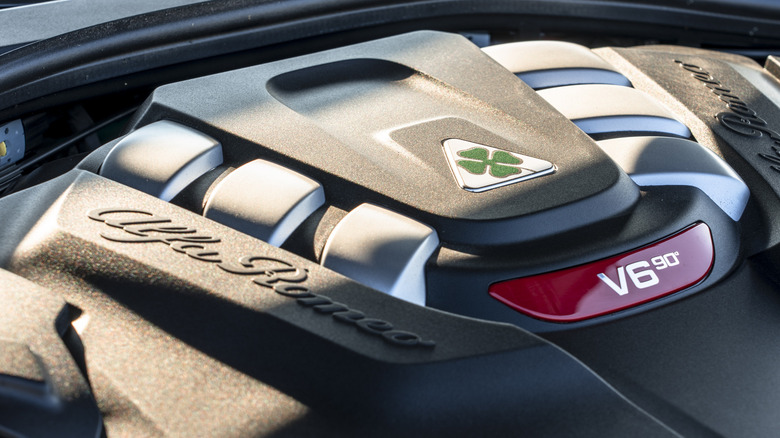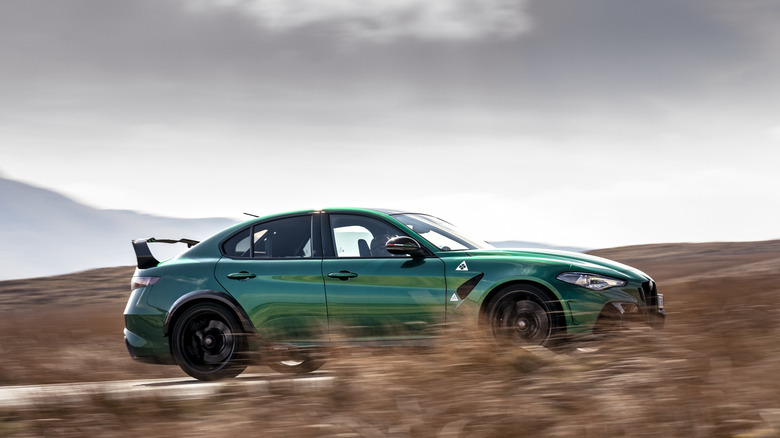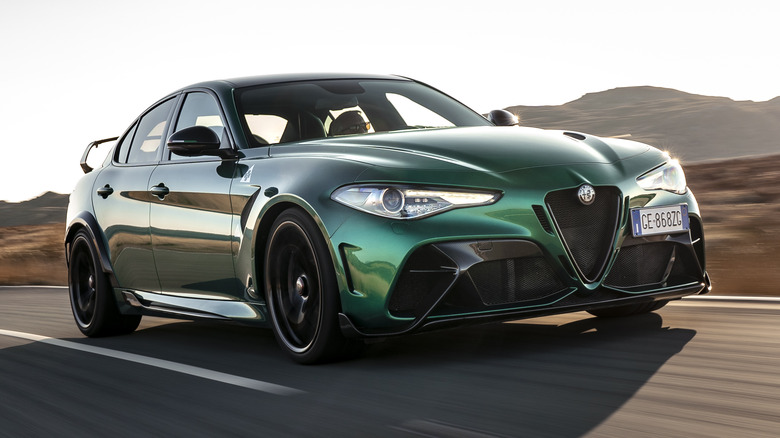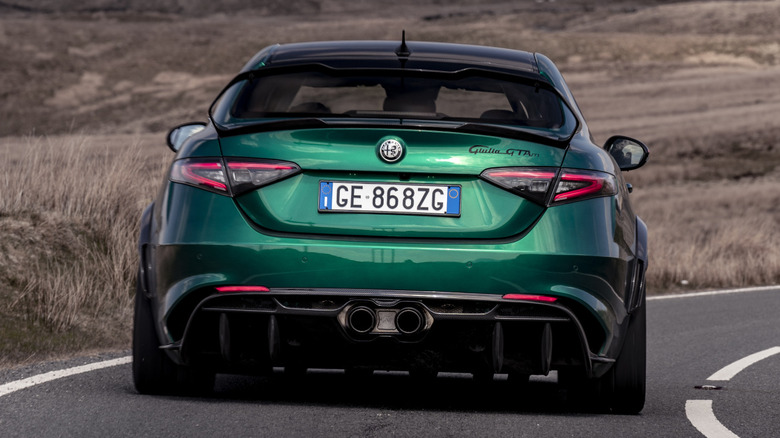A Look At The 2.9L Twin-Turbo V6 Engine That Powers The Alfa Romeo Giulia Quadrifoglio
Driving enthusiasts hold the twin-turbocharged Alfa Romeo 2.9-liter V6 in very high regard for its high power output, unique sound signature, and for how it makes models like the Giulia Quadrifoglio and Stelvio Quadrifoglio feel on the road. This engine produces over 500 horsepower, so it makes any vehicle it equips very quick, but only talking about its power and performance tells half the story.
Even though Alfa Romeo doesn't want to officially acknowledge it, the 2.9-liter turbo V6 was co-developed with Ferrari, and this is evident in several areas. The unit is freer-revving than any other similar power plant on the market, and it doesn't feel like a traditional turbocharged engine. Just like Ferrari's own turbocharged engines, the V6 in the Alfa was designed to feel linear and progressive, like a naturally aspirated mill, so that it provides excellent response and smooth power buildup.
This makes it quite different from many turbocharged performance engines on the market, which instantly feel turbocharged. They have some lag when picking up at lower rpm, and they also need a bit of time to spool up after you've pressed the go pedal. The Alfa 2.9-liter does have some vague hints of turbo lag and waiting for the turbos to spool up, but it's this responsiveness that makes this unit special for those who have experienced it.
Not quite a Ferrari engine
The Alfa V6 is from the same engine family as the Ferrari F154 3.9-liter twin-turbo V8, so it shares many of its characteristics but in a scaled-down package with two fewer cylinders and smaller displacement. Just like the Ferrari mill, it features a 90-degree V between its two banks with three cylinders each and a full aluminum engine block with dual overhead camshafts and four valves per cylinder.
It also features both regular fuel injectors and direct port injectors (12 in total), which is probably done to improve drivability and efficiency, as well as to lower emissions. But it also opens the door for tuners to be able to extract much more power out of the engine.
Alfa Romeo uses different turbochargers from Ferrari, so instead of twin-scroll turbos, it has opted for single-scroll turbos. This isn't quite as sophisticated a solution, so the turbos themselves are lighter, smaller, and cheaper to manufacture, and they aren't as efficient in everyday driving situations. The tradeoff is that single-scroll turbos offer superior power at the top end, making it enjoyable and worthwhile to rev the engine all the way to its redline, as it will continue pulling even as you approach the redline.
The standard power output of the 2.9-liter V6 in the hot versions of the Giulia and Stelvio rose to 505 horsepower at 6,500 rpm after a recent update, but the peak torque of 443 pound-feet delivered at just 2,500 rpm is unchanged. But even if peak power arrives at 6,500 rpm, it's still enjoyable to rev to its 7,400 rpm redline because, unlike many other turbo engines, power won't feel like it's tapering off after the point of peak power.
Strong performance
Equipped with the 505-horsepower version of the engine, the Giulia Quadrifoglio can sprint to 60 mph from a standstill in 3.6 seconds (quite remarkable for a rear-wheel drive-only car), and it will keep accelerating to 191 mph. The slightly heavier and less aerodynamic Stelvio Quadrifoglio is not far behind, dispatching the benchmark sprint in the same 3.6 seconds but topping out slightly lower at 176 mph.
When Car and Driver tried out the Stelvio Quadrifoglio, it found the vehicle could sprint to 60 quicker than what the manufacturer claims. During its testing, it found the SUV could reach sixty from a standstill in 3.3 seconds with the help of the car's standard all-wheel drive (which you can't specify on the hot Giulia). With all-wheel drive, the Stelvio will also provide more consistent launch time regardless of road conditions, and it will launch much better in situations where the Giulia would spin all the power away at the rear and struggle for grip.
Alfa offers a more powerful version of the 2.9-liter V6 in the limited-series Giulia GTA and GTAm models. It is tuned to make 540 horsepower at the same 6,400 rpm, and in combination with the GTA models' lower weight, stiffer suspension, and generally more hardcore setup, it gives the Giulia far better performance around a track. The official numbers say it can sprint to 60 in 3.4 seconds and has a top speed of 186.4 mph, but the real-world performance difference between a regular Giulia Quadrifoglio and a GTA will become evident around a track.
Even though it probably would have easily found buyers, Alfa Romeo never made a more hardcore GTA version of the Stelvio.
Unique sound signature
If you've ever had the pleasure of listening to an Alfa Giulia or Stelvio Quadrifoglio going through the gears under full acceleration, you know it doesn't sound like your typical force-fed V6. It has an unmistakable sound signature that is like nothing else the industry has ever produced, and this adds to how special it feels to drive one of these cars.
This is achieved by the style of the crankshaft that Alfa Romeo used, as well as the V6's firing order, which makes it produce its unmatched raspy tones. If you equip one of the Quadrifoglio models that have this engine with a freer-flowing exhaust that allows for a bit more noise, you will come very close to getting a racing car-like experience in your road-going Alfa.
It's worth noting that when Alfa Romeo launched the Giulia and Stelvio Quadrifoglio, Ferrari didn't have a V6-engined production car. In the meantime, though, the Prancing Horse has launched the Ferrari 296 GTB, which uses a completely different V6 to the one used in the Alfa (with a 120-degree V angle and different turbos), and its sound signature is wholly different. If you compare the two, it's still the Alfa that sounds more raw, even though the Ferrari engine can rev to over 8,000 rpm.



